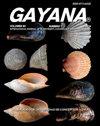Assessing climatic and intrinsic factors that drive arthropod diversity in bird nests
IF 0.2
4区 生物学
Q4 ZOOLOGY
引用次数: 2
Abstract
Bird nests are specialized structures that act as microrefuge and a source of food for arthropods. Nest arthropod richness and composition may vary according to the nest builder, geographical location and nest size. Because information on nest arthropods is scarce, there are even fewer studies on the drivers of nest arthropod diversity. We characterized arthropod diversity in cup- and dome-shaped nests along a 130 km latitudinal gradient in the mediterranean-type region of Central Chile and, we assessed whether nest dimensions and climatic factors explain richness (alpha-diversity). Then, we evaluated whether climatic differences between sites explain arthropod nest composition (beta-diversity). All collected nests hosted at least one arthropod specimen. We identified 43 taxonomic entities (4.2 entities per nest ± 0.5, mean ± SE, n = 27 nests) belonging to 18 orders and five classes: Arachnida, Diplopoda, Entognatha, Insecta and Malacostraca. We observed differences in nest arthropod richness and composition related to sites but not bird species. Larger nests supported greater arthropod richness. Furthermore, we observed that climatic differences explain the variation in arthropod composition between sites. Nests in the northern region (drier and warmer) mainly hosted Hemipterans and Hymenopterans. Contrary, nests in the southern region (humid and colder) hosted species of Collembola, Dermaptera, and Diplopoda. Positive relationship between nests surface area with arthropod richness suggests us that larger nests may keep more resources. Our study sheds light on a crucial interaction which may have potential consequences for insect assemblage composition and bird reproductive biology.评估驱动鸟巢节肢动物多样性的气候和内在因素
鸟巢是一种特殊的结构,既是微型避难所,也是节肢动物的食物来源。巢中节肢动物的丰富度和组成可能因筑巢者、地理位置和巢的大小而异。由于有关节肢动物巢穴的信息很少,因此对节肢动物多样性驱动因素的研究就更少了。我们对智利中部地中海型地区沿130公里纬度梯度的杯形和圆顶形巢穴的节肢动物多样性进行了表征,并评估了巢穴尺寸和气候因素是否解释了丰富度(α -多样性)。然后,我们评估了不同地点之间的气候差异是否解释了节肢动物巢穴组成(β -多样性)。所有收集到的巢穴都至少有一个节肢动物标本。共鉴定出蛛形目、双足目、舌颌目、昆虫目和Malacostraca目5类18目43个分类实体(平均4.2个/巢±0.5个,mean±SE, n = 27个巢)。不同地点的巢内节肢动物丰富度和组成存在差异,但鸟类种类间不存在差异。更大的巢穴支持更丰富的节肢动物。此外,我们还观察到气候差异解释了不同地点间节肢动物组成的差异。北部地区(干燥和温暖)的巢穴主要是半翅目和膜翅目昆虫的巢穴。相反,南部地区(潮湿和寒冷)的巢中有弹尾目、皮翅目和双足目昆虫。巢面积与节肢动物丰富度呈正相关关系,说明较大的巢可能保留更多的资源。我们的研究揭示了一种重要的相互作用,这种相互作用可能对昆虫组合组成和鸟类生殖生物学产生潜在的影响。
本文章由计算机程序翻译,如有差异,请以英文原文为准。
求助全文
约1分钟内获得全文
求助全文
来源期刊

GAYANA
Agricultural and Biological Sciences-Aquatic Science
CiteScore
0.60
自引率
0.00%
发文量
5
期刊介绍:
GAYANA is a scientific journal published by Universidad de Concepción, Chile. It is the modern version of Gayana Oceanología and Gayana Zoología. Therefore its numeration starts at volume 63(1).
GAYANA covers all aspects of zoology and oceanographic research. It is structured in five sections, defined by subject or discipline: Ecology, Biodiversity and Taxonomy, Earth Sciences, Evolutionary, and Applied Biology and Environmental Biology. Each section is in charge of an editor who receives and manages the manuscripts sent for evaluation in close collaboration with the editorial board.
 求助内容:
求助内容: 应助结果提醒方式:
应助结果提醒方式:


